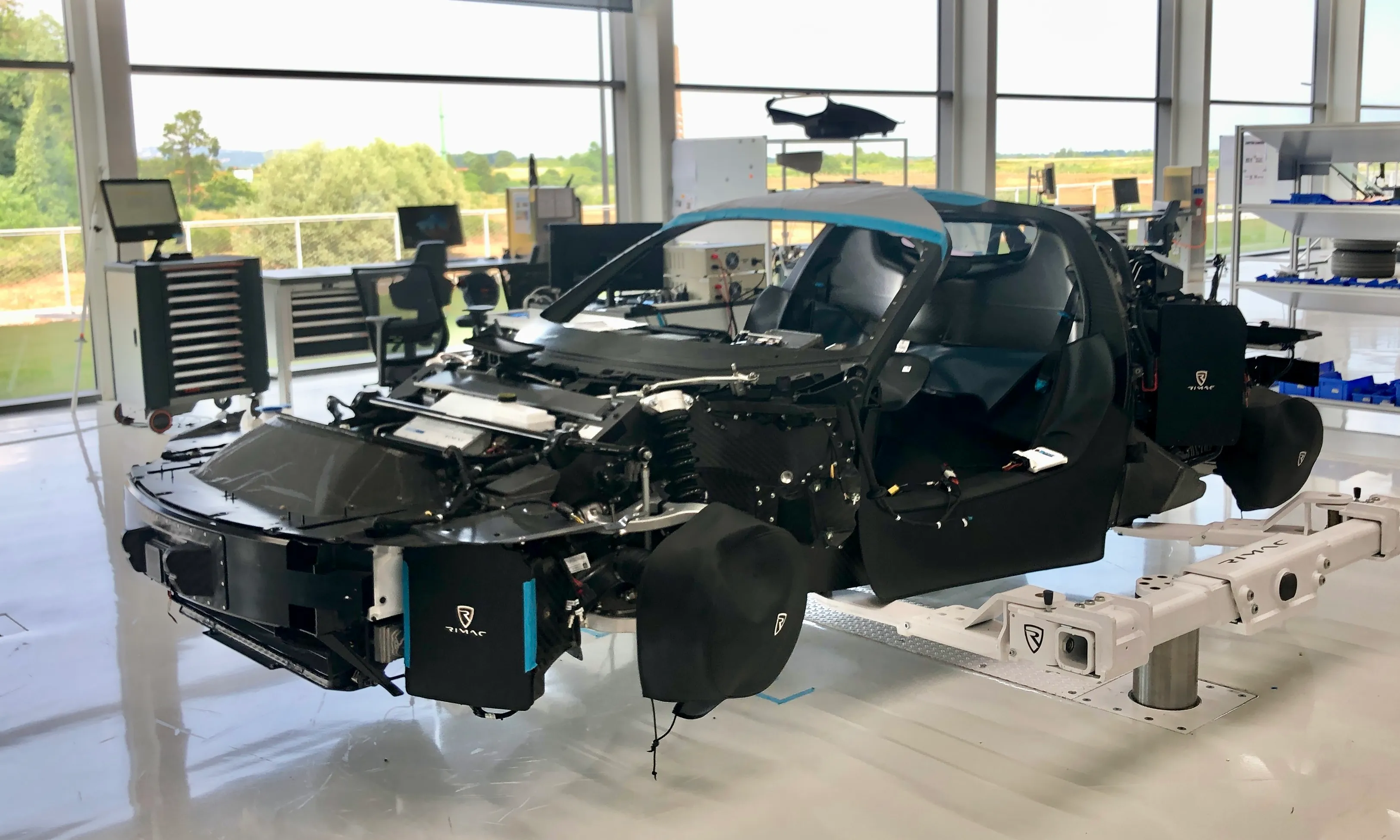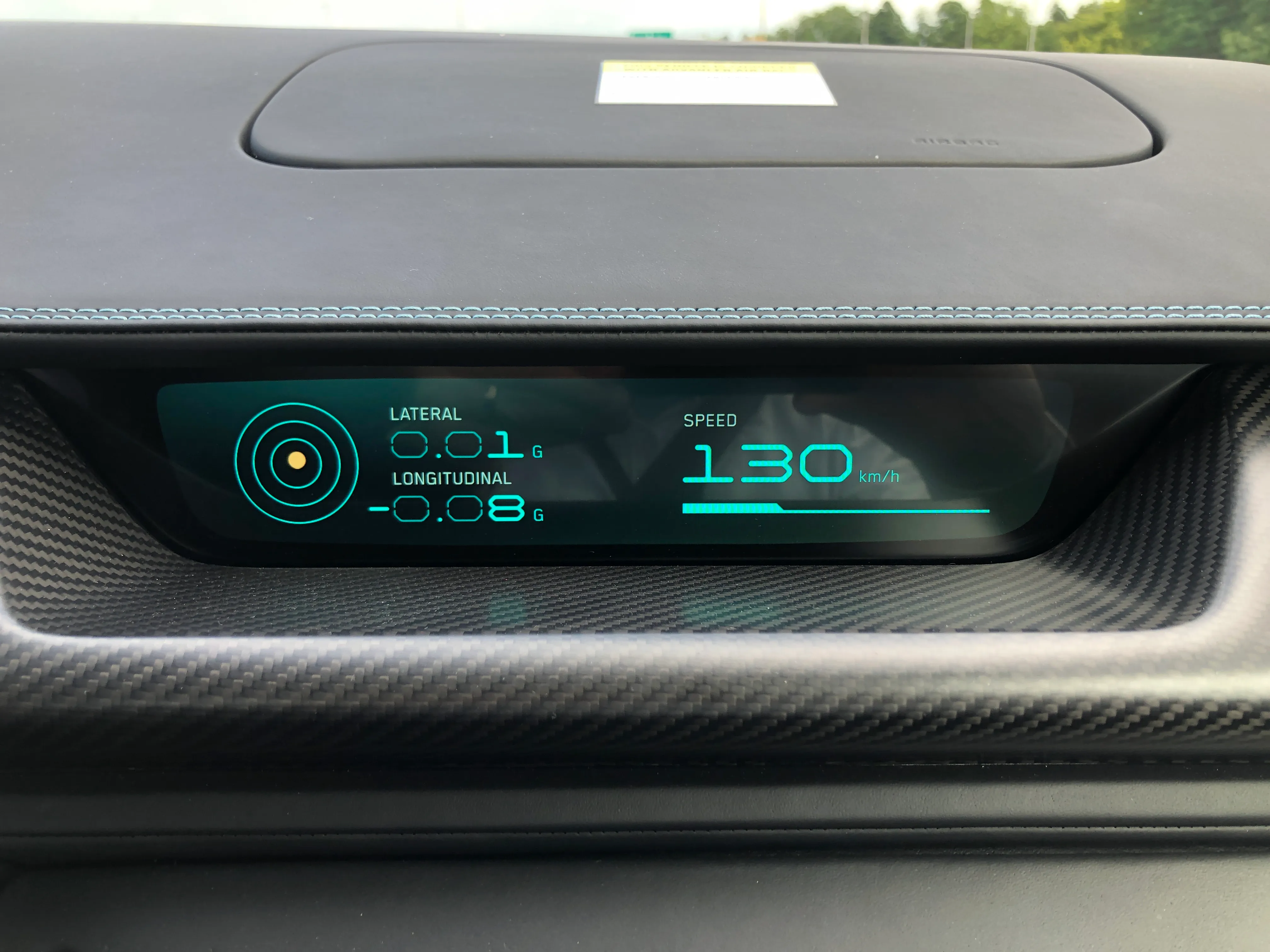Electric power delivery makes this Croatian hypercar both stunningly fast and remarkably controllable.
The automotive future is unquestionably electric, so by default, the future of performance cars is also electric. This was Mate Rimac’s early vision, and as a car enthusiast, he launched an eponymously named car company 15 years ago with the aim of developing high-tech electric supercars that deliver unprecedented performance.
The then-20-year-old Rimac [pronounced REE-mahtz, with a rolled ‘r’] was optimistic, but even he probably couldn’t have foreseen the Nevera, his company’s 2000-horsepower(ish) electric hypercar. But he insists this was exactly his goal, even then.
“This is it,” he said when the Nevera was announced. “This is the car I had in mind when I embarked on the ‘impossible’ journey.” Perhaps. But even now it is difficult to comprehend the Nevera’s performance. The car’s four electric motors produce a combined 1914 horsepower and 1,740 lb.-ft. of torque, which is enough to launch the Nevera to 60 mph in 1.85 seconds and to a top speed of 258 mph.
A quarter-mile acceleration run takes just 8.6 seconds. In the U.S., National Hot Rod Association drag strip rules require that any vehicle capable of a time of less than 10.0 seconds must be equipped with a full roll cage for crash protection.
But I’m not in the U.S. I’m in Zagreb, Croatia, home of the world’s unlikeliest hypercar manufacturer and EV pioneer, led by a boyish-looking 35 year old. I’ve flown here to experience this performance in person to confirm that the Nevera isn’t some kind of mass hallucination or internet fabrication. Indeed, it is real.


Rimac, the man and the company, have built a following on YouTube for videos showing the behind-the-scenes work at the company and serving as a de facto Croatian tourism promotion. The company gained global notice from an unfortunate 2017 crash, when former Top Gear presenter Richard Hammond crashed a Rimac prototype. He got out unscathed, but the car subsequently caught fire and was destroyed in dramatic fashion.
The Nevera’s 120-kilowatt-hour lithium-manganese-nickel battery powers the four custom surface-mounted permanent magnet motors that drive the Nevera’s four wheels individually. You might recall how amazing the Rivian R1T was because of the ability of the computer to meter power precisely to each wheel. The Nevera does the same thing with on-road and on-track performance.
One of the most amazing things about the Nevera (not counting a price tag that starts around $2.2 million), is just how simple and accessible this ludicrous performance is. Flip up the Nevera’s scissor door and slide behind the steering wheel. You’ll find that the cabin is cramped as a space capsule, especially once you pull the door closed.
The forward driving position creates a shallow footwell and the central battery pack further crowds the legroom from the center of the car. Meanwhile, the rear bulkhead segregating the cockpit from the rear of the car is close enough to impede reclining the seat, so the Nevera is snug inside.
The exposed carbon fiber surfaces lend the spartan air of a race car, but the seats are upholstered in luxurious leather. That carbon fiber creates a body shell whose rigidity scores 70,000 newton-meters per degree. That number doesn’t mean much to non-automotive engineers, but Rimac claims that it represents the most rigid car in the world.
While the Nevera has an instrument panel display ahead of the driver, an infotainment display in the center of the dashboard, and a performance computer display ahead of the passenger to amuse them with updates on acceleration, braking, and cornering loads, along with electric motor output, it is still surprisingly analog, with physical knobs, buttons, and toggle switches performing various functions.
Press “Start” to switch the Nevera on and then locate the rotary shifter on the far left side of the dashboard to engage Drive or Reverse. A similar rotary knob to the right of the steering wheel lets you select the drive mode.
This is where the Nevera employs the Rimac All-Wheel Torque Vectoring 2 (R-AWTV 2) system, which replaces ordinary stability and traction control systems. The car’s computer adjusts the power delivery to each wheel 100 times a second, ensuring the appropriate amount of torque is delivered, based on the driving mode selected, the position of the throttle pedal, the angle of the steering wheel, and any tire slippage detected.
The overall trend of the available drive modes is to push more power toward the rear wheels, to reduce regenerative braking, and to reduce power steering assistance as the driver progresses through the various settings, starting with Comfort. Select Comfort mode and the computer aims to balance mileage and performance.



Switch to Sport mode for sharper responses from the throttle, brakes, and steering. Drift mode enables tire-smoking hooliganism, sending all the power to the rear wheels to let drivers execute amazing power slides on the track. And Track mode delivers maximum performance capability, with optimum power provided through all four wheels. It is an EV, so there is also a Range mode for using the least amount of energy possible to maximum driving distance before recharging.
Tearing around Rimac’s test track revealed stark differences between each of these settings. It also revealed the shocking, visceral performance of the Nevera in pretty much any driving mode. Having nearly 2,000 horsepower on tap will do that, I suppose.
I drove under the supervision of a Rimac test driver, but for customers who take the cars home, where there is no such supervisor to provide guidance and feedback, Rimac has built in an AI driver coach. The system can analyze the driver’s performance on race tracks using the car’s multitude of sensors to provide specific guidance to improve their driving.
Acceleration runs on the drag strip are simpler. The launch mode only requires the driver to hold the brake pedal down firmly, press the accelerator pedal to the floor, and then release the brake. That’s when all hell breaks loose and the Nevera catapults to 100 mph in just 4.3 seconds. It feels like high-g teleportation.
At the end of the drag strip pass, the Nevera deploys its rear wing in air brake mode. It combines with the monstrous 15.3-inch carbon ceramic Brembo brakes with six-piston calipers to provide the street-legal equivalent of the drag ‘chute employed by NHRA dragsters at the conclusion of their runs. There’s probably no risk of detached retinas from the abrupt deceleration, but it feels possible!
This is a contrast to combustion-powered hot rods, whose launch control systems seem to require the driver to rub their belly while patting their head to activate them. Combustion cars aren’t just more complicated to launch, they are also slower.
When time is up at the track, I head back to the hotel in downtown Zagreb (in time for the annual wine festival). Rolling along the highway it is easier to notice that the huge Michelin Pilot Sport 4 S tires produce more than astounding grip. They also produce a noticeable amount of road noise, and the Nevera’s rigid carbon structure is excellent at transmitting that noise to the cabin.
Rimac could pack the Nevera with sound deadening, but that would add weight. A better solution is to turn up the volume on the audio system. The hardest part is getting out at the end of the ride. Literally. You have to elbow the flip-up scissor door like you mean it to get it to open.
The post Driving the $2 Million, 2,000-horsepower Rimac Nevera EV appeared first on Popular Science.
from Popular Science https://ift.tt/bpnh6MQ



0 Comments